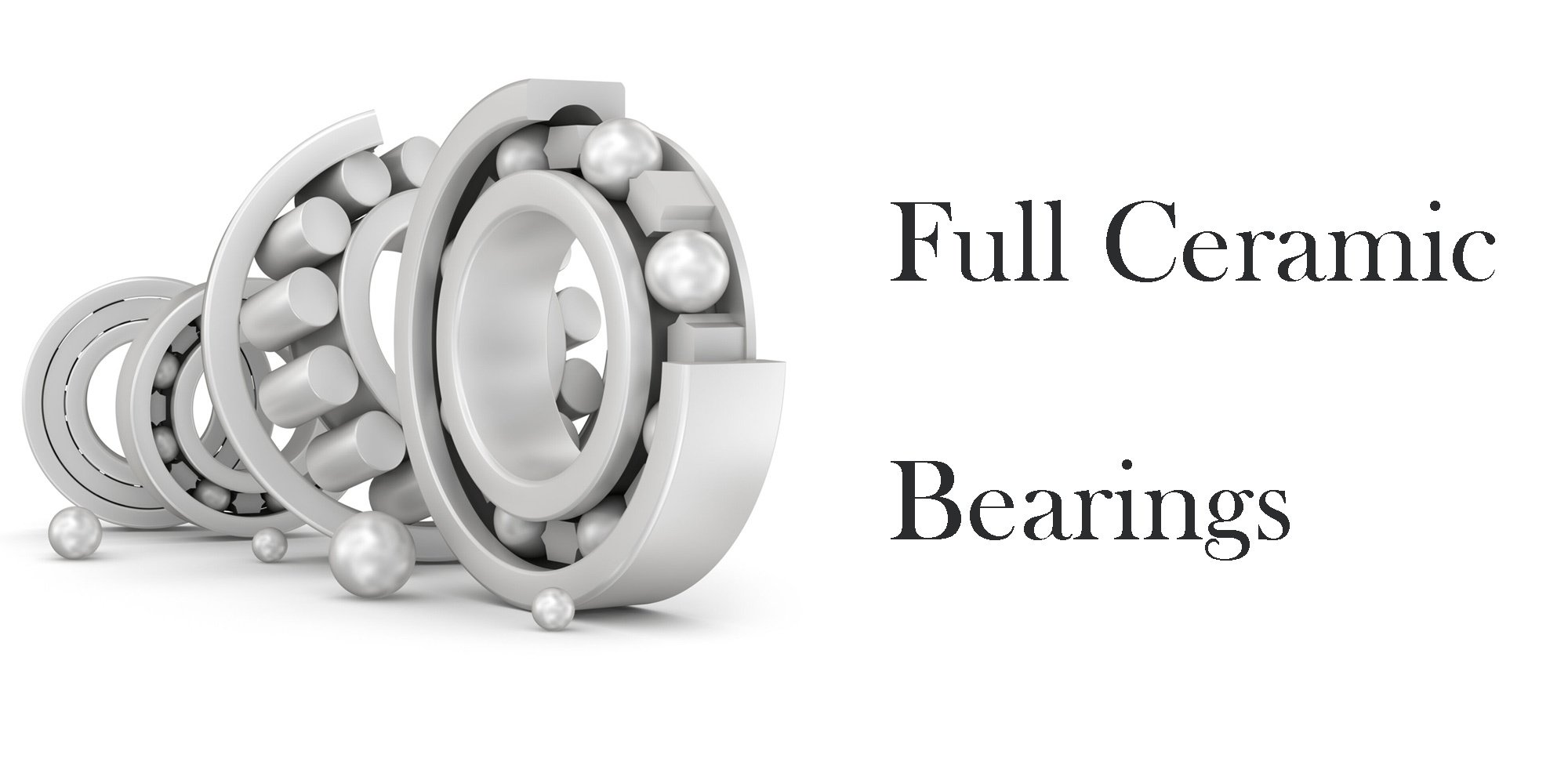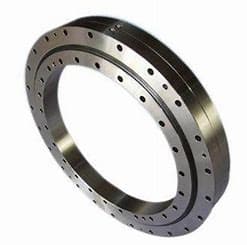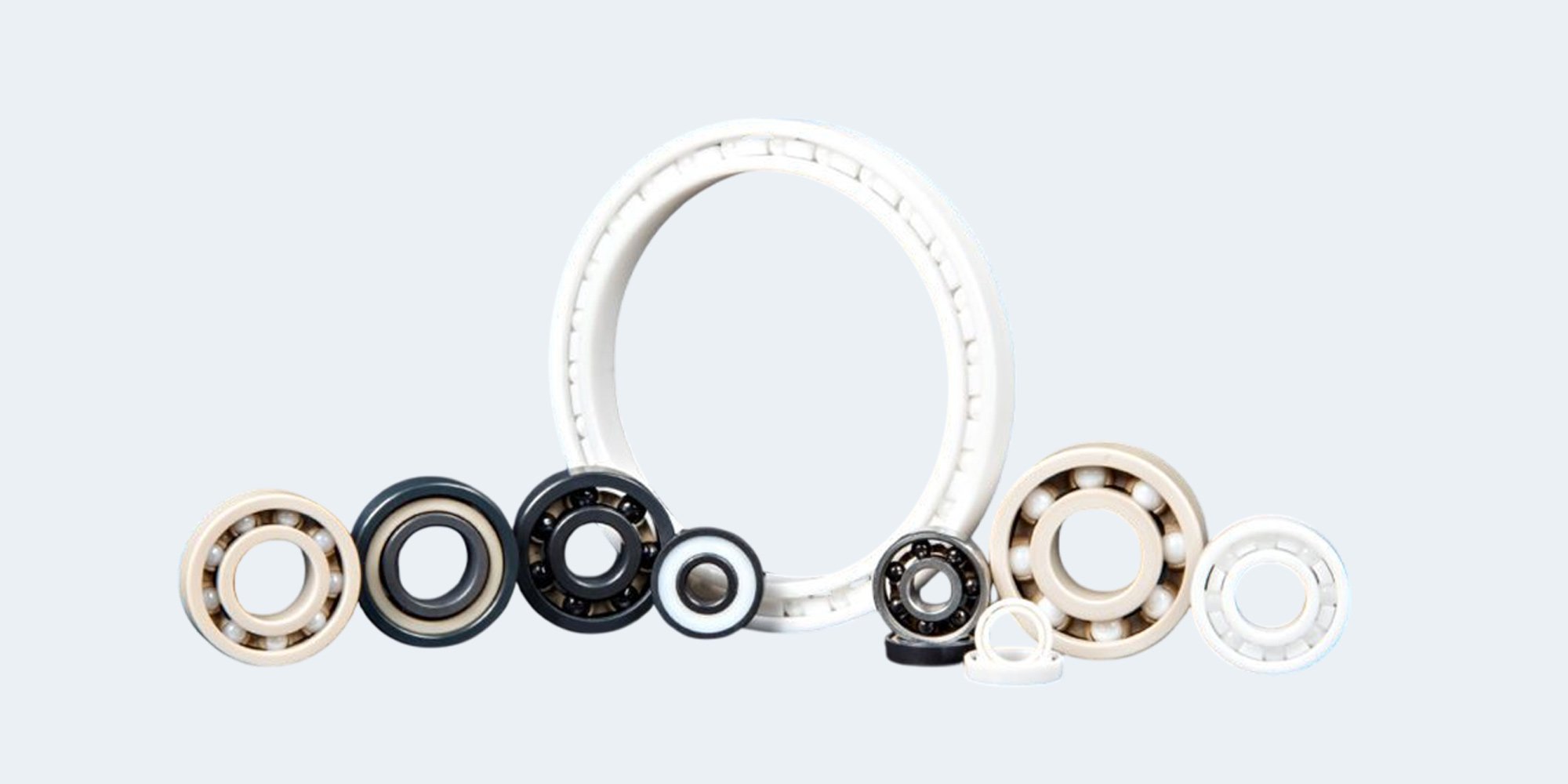Si3N4 Ceramic Bearings & Electric Vehicle Industry
For the sake of environmental protection, the electric vehicle industry has been growing rapidly in recent years. The electric vehicles in China...

Full ceramic bearings offer superior corrosion resistance. They provide excellent thermal stability and low friction.
This makes them ideal for demanding environments like aerospace, medical devices, and chemical processing.
In this blog, we will introduce full ceramic bearings, highlighting how they differ from traditional stainless steel bearings.
Full ceramic bearings are made entirely from ceramic materials for the inner and outer races and the rolling elements.
Full ceramic bearings are resistant to corrosion from water, chemicals, and salt.
This makes them well-suited for harsh environments such as marine and chemical settings.
They provide reliable performance in tough conditions.
Full ceramic bearings perform superbly well in extreme temperatures, ranging from -85°C to 800°C.
This makes them ideal for industries such as medical devices, aerospace industry.
Full ceramic bearings are about two-thirds lighter than traditional steel bearings, reducing inertia in high-speed applications.
This weight reduction boosts efficiency where speed is crucial.
Their low friction also minimizes wear and energy consumption, making them ideal for high-speed machinery and vacuum environments.
Ceramic materials are non-conductive and can be used in medical devices and MRI machines.
Full ceramic bearings do not interfere with magnetic fields. This makes them suitable for sensitive equipment.
Full ceramic bearings have an extremely low coefficient of friction.
This feature enhances the efficiency of the machinery and prolongs the lifespan of the bearings.
Full ceramic bearings come in various types, each designed for specific applications.
Ceramic deep groove ball bearings are ideal for high-speed applications needing precision and low friction.
This makes them perfect for electric motors, robotics, and other high-speed machinery.

Angular contact ball bearings are perfect for high-precision machine tools and machine spindles.
They support both axial and radial loads while handling high-speed rotations with minimal vibration.

Thrust ball bearings are ideal for applications where axial loads are primary.
They are commonly used in centrifuges, turbomachinery, and pumps.
These bearings handle thrust loads efficiently, ensuring reliable performance in high-stress environments.

Self-aligning ball bearings compensate for misalignment between the shaft and housing.
They are ideal for rotary equipment and machinery with shaft deflection.

Insert bearings are easy to mount and provide excellent resistance to chemicals and moisture.
This makes them ideal for environments with corrosive elements.

Tapered roller bearings are designed to handle large radial and axial loads.
They are ideal for heavy-duty applications like automotive wheel hubs, mining equipment, and conveyor systems.

Cylindrical roller bearings are designed to handle high radial loads with minimal friction.

Flanged ball bearings simplify mounting in tight spaces and are ideal for compact designs.

Ceramic bearings are widely used in the aerospace industry for jet engines, turbines, and high-performance systems.
They withstand extreme heat and high-speed rotations.
In the medical field, Si3n4 ceramic bearings are essential for MRI machines, surgical tools, and diagnostic equipment.
In semiconductor manufacturing, full ceramic bearings are used in vacuum chambers and high-precision instruments.
Their low friction and non-magnetic properties help reduce impurities and ensure precision in cleanroom environments.
Ceramic bearings resist saltwater corrosion, making them ideal for marine engines, offshore oil platforms, and water-based applications.
They offer long-term durability in harsh, corrosive environments.
Their resistance to saltwater reduces maintenance needs.
In chemical processing, full ceramic bearings are used in pumps, valves, and other components exposed to aggressive chemicals.
Their exceptional chemical resistance ensures reliable performance in harsh environments.
They help extend equipment lifespan and reduce maintenance.
Ceramic bearings excel in high-speed machinery such as dental drills, turbochargers, and centrifuges.
They offer low friction and thermal stability, which are crucial for these applications.
Full ceramic bearings are made entirely of ceramic materials, including both the inner and outer ceramic rings, as well as the balls.
They provide excellent resistance to corrosion, high temperatures, and wear.
Hybrid ceramic bearings combine steel rings with ceramic balls.
Ceramic balls in hybrid bearings reduce weight, friction, and increase speed, while steel rings provide strength and durability.
Hybrid bearings are used when balancing performance and cost is important.
Here’s a comparison between ceramic ball bearings and full ceramic bearings:
|
Feature |
Hybrid Bearings |
Full Ceramic Bearings |
|
Speed |
Higher because of ceramic balls’ lower friction and density |
Higher because of ceramics’ superior properties |
|
Flexibility |
Better with steel rings absorbing stress |
Less flexible as ceramics are more brittle |
|
Corrosion Resistance |
Lower because steel rings can corrode |
Higher with both components made from corrosion-resistant ceramics |
|
Thermal Stability |
Lower because of steel rings affecting performance |
Higher as ceramics handle a wide temperature range well |
|
Load Capacity |
Higher because steel rings can handle significant loads |
Lower because of ceramics’ brittleness and limited load capacity |
Full ceramic bearings are much more expensive than steel or hybrid bearings because of costly materials and complex manufacturing.
The high price comes from the expensive ceramics and precise production needed, leading to a higher upfront cost.
Ceramic materials are more brittle than steel, offering excellent hardness but less toughness.
This brittleness makes full ceramic bearings prone to cracking under heavy impacts or sudden shocks.
Unlike steel bearings, which can absorb stress, ceramic bearings may fail if exposed to unexpected loads or impacts.
Full ceramic bearings have a lower load capacity than steel or hybrid bearings.
Their brittleness limits their ability to handle high loads, making them less suitable for heavy-duty applications.
They cannot withstand high stress without failure.
Full ceramic bearings are expensive and suited for specialized, high-tech industries like aerospace and high-speed machinery.
Their high-speed capability and corrosion resistance are valuable in these fields.
However, their cost and brittleness limit their use in standard applications.Compared to conventional bearings, they are less practical for everyday use.
Full ceramic bearings are excellent for high-speed, corrosion resistance, and thermal stability.
However, their higher cost, brittleness, and lower load capacity limit their use.
They are best for specialized, high-performance applications where these properties are essential.
If your industry could benefit from full ceramic bearings, Contact us today to learn more.

For the sake of environmental protection, the electric vehicle industry has been growing rapidly in recent years. The electric vehicles in China...

Curious about maintaining ceramic bearings? Questions like “What makes ceramic bearings better?”, "What can I use to clean ceramic bearings?" or...

Ceramic bearings reduce friction in cycling parts like wheels, bottom brackets, and hubs. This provides smoother and more efficient motion. Ceramic...